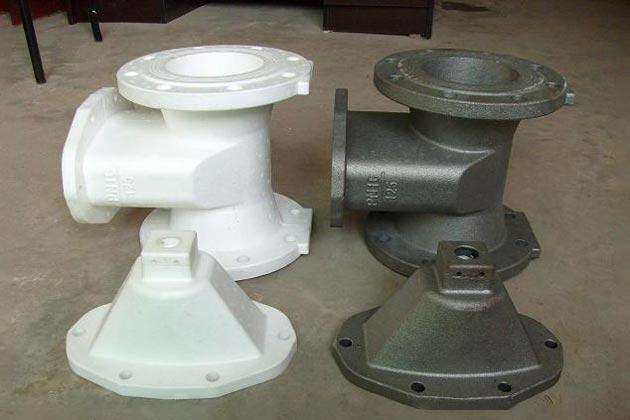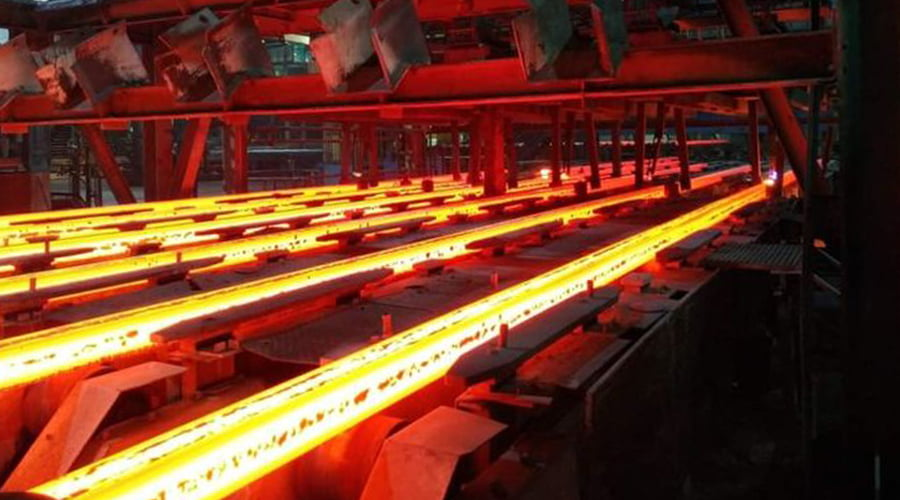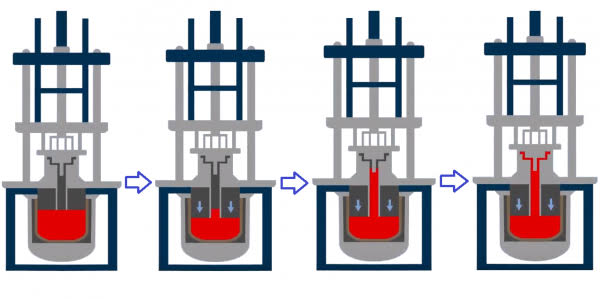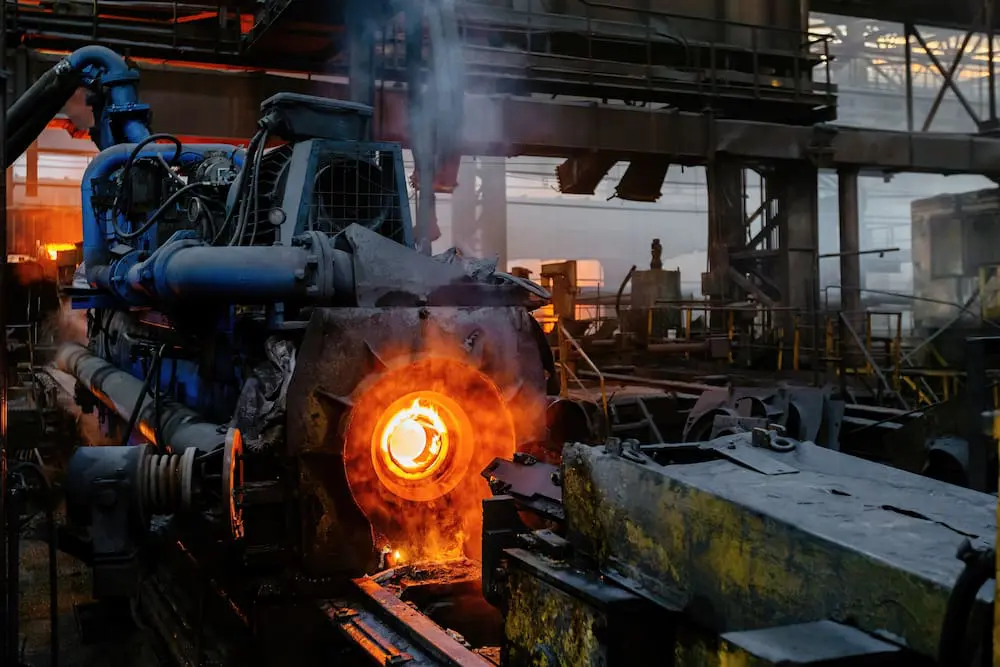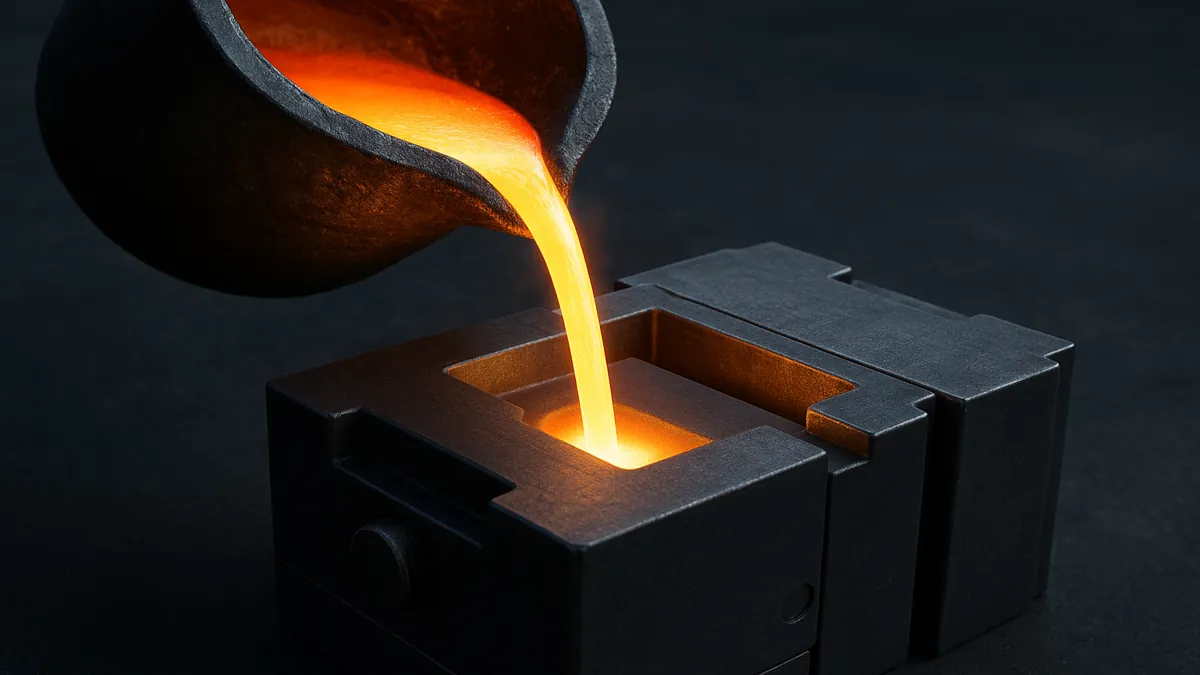Casting is a fundamental process in manufacturing that involves pouring molten material into a mold to create a specific shape. Various casting methods are employed depending on the material, complexity, and intended use of the final product. While there are several casting techniques, four main types stand out for their unique properties and applications. In this blog, we’ll explore these four main types of casting—Sand Casting, Gravity Die Casting, Pressure Die Casting, and Investment Casting—along with a brief overview of other notable methods like Plaster Casting, Centrifugal Casting, Lost-Foam Casting, and Vacuum Casting.
1. Sand Casting Process
Sand casting is one of the oldest and most versatile casting processes used in the manufacturing industry. It involves creating a mold from sand, which can accommodate a wide variety of ferrous and non-ferrous metal alloys.
How Sand Casting Works
- Pattern Creation: A pattern of the object to be cast is made, usually from wood, plastic, or metal. This pattern is used to create a cavity in the sand.
- Mold Preparation: Sand is mixed with a binder to form a mold. The pattern is then placed into the sand, and the sand is packed tightly around it.
- Pattern Removal: Once the sand has set, the pattern is removed, leaving a cavity in the sand that mirrors the shape of the desired object.
- Metal Pouring: Molten metal is poured into the cavity. After the metal has cooled and solidified, the sand mold is broken away to reveal the casting.
Advantages of Sand Casting
- Flexibility: Sand casting can be used for various metals, including aluminum, iron, and bronze.
- Cost-Effective: The materials used for sand casting are relatively inexpensive, making it suitable for low to medium production volumes.
- Versatility: It can produce a wide range of sizes and shapes, from small intricate components to large industrial parts.
Applications
Sand casting is commonly used in the automotive, aerospace, and machinery industries. It is ideal for producing parts like engine blocks, gears, and industrial machinery components.
2. Gravity Die Casting
Gravity die casting, also known as permanent mold casting, involves pouring molten metal into a reusable mold using gravity. This method is often used for high-volume production of smaller, precise parts.
How Gravity Die Casting Works
- Mold Preparation: The mold is made from high-quality steel or other durable materials and is designed to withstand repeated use. It is typically composed of two halves that close around the pattern.
- Metal Pouring: Molten metal is poured into the mold cavity using gravity. The process relies on the natural force of gravity to fill the mold.
- Cooling and Ejection: After the metal has cooled and solidified, the mold is opened, and the casting is ejected.
Advantages of Gravity Die Casting
- High Precision: Produces parts with excellent dimensional accuracy and surface finish.
- Reusable Molds: The use of durable molds allows for high-volume production with consistent quality.
- Good Mechanical Properties: Castings have good mechanical strength and can be used in demanding applications.
Applications
Gravity die casting is commonly used for producing components in the automotive and aerospace industries, such as engine components, housings, and brackets.
3. Pressure Die Casting
Pressure die casting, or simply die casting, is a process where molten metal is injected into a mold under high pressure. This method is suitable for producing complex and high-precision components with tight tolerances.
How Pressure Die Casting Works
- Mold Preparation: The mold, typically made of high-strength steel, is designed to withstand the high pressures involved in the casting process.
- Injection: Molten metal is injected into the mold cavity at high pressure, which ensures that the metal fills every part of the mold.
- Cooling and Ejection: Once the metal has solidified, the mold is opened, and the casting is ejected.
Advantages of Pressure Die Casting
- High Precision: Produces parts with excellent dimensional accuracy and surface finish.
- Complex Geometries: Capable of casting intricate shapes and thin-walled components.
- Fast Production: Suitable for high-volume production due to the quick cooling and solidification times.
Applications
Pressure die casting is widely used in the automotive, electronics, and consumer goods industries. It is ideal for producing parts such as housings, brackets, and intricate components with high precision.
4. Investment Casting
Investment casting, also known as lost-wax casting, is a process where a pattern made of wax is coated with a ceramic shell. The wax is then melted and removed, leaving a cavity that is filled with molten metal.
How Investment Casting Works
- Pattern Creation: A pattern of the object to be cast is made from wax or a similar material.
- Shell Building: The pattern is coated with a series of ceramic layers to create a hard shell.
- Wax Removal: The shell is heated to melt and remove the wax, leaving behind a hollow ceramic mold.
- Metal Pouring: Molten metal is poured into the mold cavity.
- Shell Removal: After the metal has cooled and solidified, the ceramic shell is broken away to reveal the casting.
Advantages of Investment Casting
- High Precision: Produces parts with excellent detail and surface finish.
- Complex Shapes: Capable of casting complex geometries and intricate details.
- Material Versatility: Can be used with a wide range of metals, including high-temperature alloys.
Applications
Investment casting is commonly used in aerospace, automotive, and medical industries. It is ideal for producing high-precision components such as turbine blades, surgical instruments, and engine parts.
Other Notable Casting Methods
In addition to the four main types of casting, there are several other methods that offer specific advantages for different applications. Here’s a brief overview of some notable casting techniques:
1. Plaster Casting
Plaster casting involves creating a mold using plaster of Paris or other similar materials. The process is often used for small, intricate parts and can achieve a high level of detail and surface finish.
Applications
Plaster casting is used in the art and jewelry industries for creating detailed sculptures and fine jewelry components.
2. Centrifugal Casting
Centrifugal casting uses centrifugal force to distribute molten metal into a rotating mold. This method is particularly effective for producing cylindrical parts with uniform density and fewer defects.
Applications
Centrifugal casting is commonly used for manufacturing pipes, tubes, and other cylindrical components.
3. Lost-Foam Casting
Lost-foam casting is a process where a foam pattern is used to create a mold cavity. The foam is evaporated when molten metal is poured into the mold, leaving behind a casting with high detail.
Applications
Lost-foam casting is used in automotive and aerospace industries for producing complex components with high precision.
4. Vacuum Casting
Vacuum casting involves pouring molten metal into a mold under a vacuum to reduce the presence of air and minimize defects. This method is often used for casting metals that are sensitive to oxidation or contamination.
Applications
Vacuum casting is used for producing high-quality components in the aerospace and electronics industries.
Conclusion
Casting is a versatile and essential manufacturing process with several methods suited to different applications and requirements. Understanding the four main types of casting—Sand Casting, Gravity Die Casting, Pressure Die Casting, and Investment Casting—along with other notable methods like Plaster Casting, Centrifugal Casting, Lost-Foam Casting, and Vacuum Casting, provides valuable insights into how various parts and components are produced with precision and efficiency. Each casting method has its advantages and is chosen based on factors such as material, complexity, and production volume, ensuring that the final products meet the desired specifications and performance standards.

